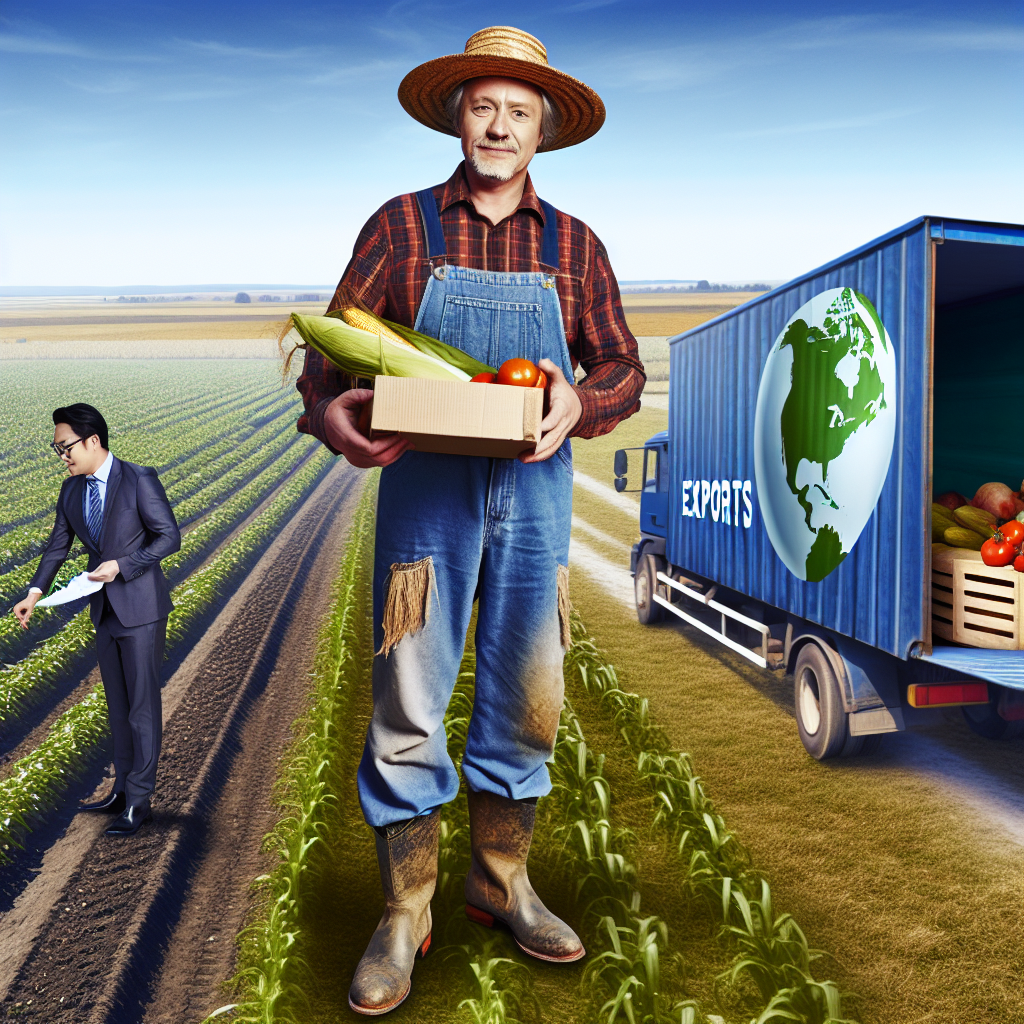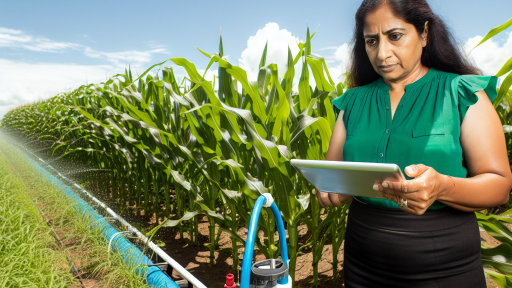Identifying Target Markets for Farm Exports
Understanding Market Needs
To successfully export farm produce, understanding market needs is crucial.
Research potential consumers’ preferences and demands.
Different regions have varying tastes, so tailor offerings accordingly.
Specific crops may thrive better in some markets than others.
Analyzing Market Trends
Keeping track of market trends aids in decision-making.
Examine shifts in supply and demand patterns regularly.
Stay updated with industry reports and agricultural forecasts.
Additionally, use social media and online platforms for insights.
Identifying Competitors
Identify and analyze competitors in target markets.
Understand their strategies, strengths, and weaknesses.
This helps to carve out a unique selling proposition.
Incorporate distinctive features to stand out from competitors.
Assessing Regulatory Requirements
Each market has its own regulatory requirements.
Research the import regulations of potential target countries.
This includes tariffs, quotas, and quality standards.
Transform Your Agribusiness
Unlock your farm's potential with expert advice tailored to your needs. Get actionable steps that drive real results.
Get StartedCompliance is necessary to avoid costly penalties.
Utilizing Export Promotion Agencies
Export promotion agencies can be valuable resources.
These organizations provide market analysis and support services.
They may also facilitate networking opportunities.
Connect with local agricultural extension offices for guidance.
Building Relationships with Distributors
Establishing strong relationships with distributors is key.
These partners can help introduce products to new markets.
Attend trade shows and networking events to meet potential distributors.
Clear communication and trust are essential for successful partnerships.
Understanding Export Regulations and Compliance Requirements
Importance of Compliance
Compliance with export regulations safeguards your business.
It helps avoid legal issues and financial penalties.
Additionally, compliance builds trust with foreign partners.
Identifying Regulatory Bodies
Various agencies govern exportation of farm produce.
In the United States, the USDA ensures agricultural standards.
The FDA regulates food safety in exports.
Additionally, the U.S. Customs and Border Protection monitors exports.
Understanding Export Documentation
Proper documentation is crucial for successful exports.
You need an export license in many cases.
Invoices, packing lists, and certificates of origin are essential.
Moreover, ensure that you have phytosanitary certificates for perishable goods.
Staying Informed on International Standards
International standards vary by country and product type.
Research regulations in your target market thoroughly.
For instance, the EU has specific regulations for pesticide residues.
Additionally, consider certifications like GlobalGAP for market entry.
Showcase Your Farming Business
Publish your professional farming services profile on our blog for a one-time fee of $200 and reach a dedicated audience of farmers and agribusiness owners.
Publish Your ProfileNavigating Tariffs and Trade Agreements
Tariffs can significantly impact your profit margins.
Understand the trade agreements affecting your exports.
For example, NAFTA influences trade between the U.S., Canada, and Mexico.
Similarly, newer agreements like the USMCA offer additional benefits.
Finalizing Logistics and Shipping Requirements
Shipping permits play a vital role in the exporting process.
Know the logistics of transporting perishable goods.
Temperature control and timing are critical to maintaining quality.
Consider working with experienced logistics companies.
Continuous Education on Export Practices
Stay updated on changes in export regulations.
Participate in workshops and training programs.
Networking with other exporters can provide valuable insights.
Furthermore, consider getting advice from export consultants.
Enhancing Product Quality and Safety Standards for Export
Importance of Quality and Safety
High-quality produce ensures consumer satisfaction and loyalty.
Meeting safety standards protects public health and minimizes risks.
These factors directly influence the marketability of farm products.
Understanding International Standards
Familiarizing yourself with international quality benchmarks is crucial.
Research organizations like Codex Alimentarius for global food standards.
Each country may have specific requirements for imports.
Implementing Quality Assurance Programs
Establishing quality assurance programs is essential for consistency.
Conduct regular inspections to maintain quality control throughout production.
Train employees on best practices to ensure adherence to standards.
Document processes to demonstrate compliance and enhance traceability.
Investing in Technology
Utilizing technology can significantly improve product quality.
Invest in equipment that enhances quality monitoring and storage.
Adopt precision agriculture techniques to optimize yield and quality.
Ensuring Safe Handling and Transportation
Implement safe handling procedures from farm to market.
Train staff on hygienic practices and safe transportation methods.
Maintain optimal temperatures and conditions during transport.
Use appropriate packaging materials to protect produce from damage.
Certifications and Labels
Obtaining relevant certifications builds trust with consumers.
Consider organic or fair-trade certifications as a marketing advantage.
Labels provide information on quality and safety and attract buyers.
Engaging in Continuous Improvement
Seek feedback from customers to identify areas for improvement.
Monitor industry trends to stay ahead of safety and quality standards.
Regularly update practices based on new research and technologies.
Find Out More: Tax Filing Tips for Successful Farmers
Developing an Effective Export Marketing Strategy
Understanding Your Target Market
Begin by researching potential markets for your farm produce.
Identify countries or regions with high demand for your products.
Analyze consumer preferences and cultural factors that influence purchasing decisions.
Additionally, assess the competitive landscape in these markets.
Showcase Your Farming Business
Publish your professional farming services profile on our blog for a one-time fee of $200 and reach a dedicated audience of farmers and agribusiness owners.
Publish Your ProfileGather insights on pricing strategies used by local producers.
Creating a Strong Brand Identity
A strong brand identity helps differentiate your produce in foreign markets.
Focus on developing a unique value proposition for your products.
Consider using eco-friendly packaging to attract environmentally conscious consumers.
Furthermore, tell your brand story to create emotional connections with buyers.
Building Export Partnerships
Forming partnerships with local distributors can enhance market entry.
Seek out distributors who have a strong understanding of the local market.
Moreover, consider alliances with other exporters for shared resources.
Collaboration can reduce costs and improve market penetration.
Navigating Regulatory Requirements
Ensure you understand the import regulations of your target markets.
Research required certifications and phytosanitary measures essential for exports.
Stay updated on any changes in trade agreements that may impact your business.
Additionally, consult with export professionals to streamline the process.
Implementing Effective Marketing Strategies
Adopt a multi-channel approach for marketing your produce globally.
Utilize online platforms, trade fairs, and social media to reach potential buyers.
Integrate digital marketing strategies to promote your brand’s online presence.
Moreover, consider attending international agricultural trade shows.
Measuring Success and Adapting Strategies
Regularly assess the performance of your export marketing efforts.
Collect feedback from partners and customers to identify areas for improvement.
Adjust your strategies based on market trends and consumer preferences.
By continuously measuring success, you position yourself for long-term growth.
Gain More Insights: Differences Between Organic And Conventional
Leveraging Technology for Efficient Export Operations
Adopting Advanced Software Solutions
Advanced software solutions streamline export operations significantly.
Custom software can manage inventory, shipments, and documentation.
Many innovative platforms offer real-time tracking of produce.
Additionally, these solutions improve communication with stakeholders.
Utilizing E-commerce Platforms
E-commerce platforms expand market access for farmers.
These platforms connect producers directly with international buyers.
Moreover, they facilitate transactions and logistics seamlessly.
Farmers can showcase their products to a global audience.
Implementing Data Analytics
Data analytics enhances decision-making processes for exporters.
By analyzing market trends, farmers can anticipate demands.
This strategy helps in optimizing production schedules.
Additionally, data insights can improve pricing strategies.
Embracing Mobile Technology
Mobile technology allows for on-the-go operations management.
Farmers can monitor crop conditions using mobile applications.
These apps provide vital information about weather and market prices.
As a result, farmers can make informed decisions quickly.
Enhancing Supply Chain Management
Technology improves the entire supply chain management process.
By integrating systems, stakeholders can collaborate more effectively.
Showcase Your Farming Business
Publish your professional farming services profile on our blog for a one-time fee of $200 and reach a dedicated audience of farmers and agribusiness owners.
Publish Your ProfileThis integration minimizes delays and enhances delivery times.
Furthermore, it reduces costs associated with exports.
You Might Also Like: Choosing The Right Organic Certification Body

Building Relationships with International Buyers and Distributors
Understanding the Market
Understanding the market is crucial for successful exporting.
Start by researching potential international buyers.
Identify their needs and preferences for farm produce.
Explore markets that show high demand for specific products.
Additionally, analyze market trends to stay ahead.
Networking Opportunities
Networking is an effective strategy for building relationships.
Attend international trade shows related to agriculture.
Connect with industry professionals and potential buyers.
Join agricultural associations that focus on exports.
Moreover, consider online platforms for global networking.
Effective Communication
Communication plays a vital role in relationship building.
Establish clear and open lines of communication.
Utilize multiple channels such as emails and video calls.
Ensure your messages are concise and respectful.
Additionally, be culturally aware in your interactions.
Building Trust Over Time
Trust is essential for securing long-term partnerships.
Deliver on your promises consistently.
Provide high-quality products that meet agreed standards.
Follow up with buyers to ensure satisfaction.
Furthermore, maintain transparency in your dealings.
Leveraging Social Media
Social media can enhance your visibility to international buyers.
Create profiles on platforms favored by your target audience.
Share informative content about your products and practices.
Engage with potential customers by responding promptly.
In addition, showcase positive client testimonials to build credibility.
Customized Approaches
No two buyers are alike, so tailor your approach.
Understand each buyer’s unique requirements and preferences.
Offer personalized solutions to meet their needs.
Be flexible in negotiations to build rapport.
Lastly, continually adapt based on buyer feedback.
Gain More Insights: Essential Export Documentation for Farmers
Utilizing Export Financing and Insurance Options
Understanding Export Financing
Export financing provides essential support for farmers looking to expand globally.
This financing helps manage cash flow and covers production costs.
Farmers can access loans specifically designed for exporting purposes.
Moreover, these loans often have favorable terms and low-interest rates.
To benefit, farmers should research available financing options thoroughly.
Types of Export Financing
There are several key types of export financing available to farmers.
Showcase Your Farming Business
Publish your professional farming services profile on our blog for a one-time fee of $200 and reach a dedicated audience of farmers and agribusiness owners.
Publish Your Profile- Pre-export financing provides funds before goods are shipped.
- Post-export financing helps with cash flow after shipping occurs.
- Government programs may offer guarantees to encourage exports.
Farmers should evaluate each option based on their specific needs.
Understanding Export Insurance
Export insurance protects against potential risks in international trade.
This insurance covers losses from buyer non-payment or political risks.
By securing this coverage, farmers can mitigate financial risks.
Furthermore, insurance can enhance credibility with foreign buyers.
Farmers should consider investing in comprehensive export insurance plans.
Types of Export Insurance
Different types of export insurance options are available to farmers.
- Trade credit insurance secures payments from foreign buyers.
- Political risk insurance covers losses due to government actions.
- Marine cargo insurance protects goods during transit.
Understanding these varied options helps in making informed decisions.
Application Process for Financing and Insurance
The application process for export financing and insurance is crucial.
Farmers must gather necessary documentation and financial records.
Additionally, they should present a strong business plan to potential lenders.
It is essential to differentiate one’s produce in the proposal.
Once submitted, applicants should remain responsive to lender inquiries.
Best Practices for Export Financing and Insurance
To maximize benefits, farmers should follow best practices in export financing.
- Maintain accurate financial records for easier access to loans.
- Seek advice from trade professionals to enhance proposals.
- Regularly review financing needs as business scales.
These practices will lead to more favorable terms and greater security.
Navigating Logistics and Supply Chain Management for Exporting
Understanding the Importance of Logistics
Logistics plays a critical role in exporting farm produce.
It impacts the freshness and quality of the products.
Efficient logistics improves customer satisfaction and reduces costs.
Planning Your Supply Chain
Start by evaluating your supply chain strategy.
Your plan should address sourcing, production, and distribution.
Identify key partners, such as suppliers and transporters.
Establish clear communication channels among all stakeholders.
Choosing the Right Transportation
Select transportation methods based on your produce type.
For perishable items, consider refrigerated transport.
Evaluate costs, delivery times, and reliability before deciding.
Additionally, consider the environmental impact of your choices.
Compliance with International Regulations
Investigate regulations for exporting farm produce.
Different countries have unique requirements for imports.
Ensure your products meet health and safety standards.
Complete all necessary documentation to avoid delays.
Using Technology to Streamline Processes
Implement software solutions for inventory management.
Track shipments in real-time to ensure timely deliveries.
Utilize data analytics for demand forecasting and planning.
Additionally, technology can help in managing relationships with partners.
Tracking and Managing Inventory
Maintain an accurate inventory to prevent shortages and waste.
Regularly review stock levels and adjust orders as needed.
Implement a stock rotation system to keep products fresh.
Utilize inventory management tools for better organization.
Building Relationships with Export Partners
Nurture relationships with your export partners.
Effective communication enhances collaboration and trust.
Showcase Your Farming Business
Publish your professional farming services profile on our blog for a one-time fee of $200 and reach a dedicated audience of farmers and agribusiness owners.
Publish Your ProfileConsider joint ventures to expand your market reach.
Regularly assess partner performance to ensure quality service.




